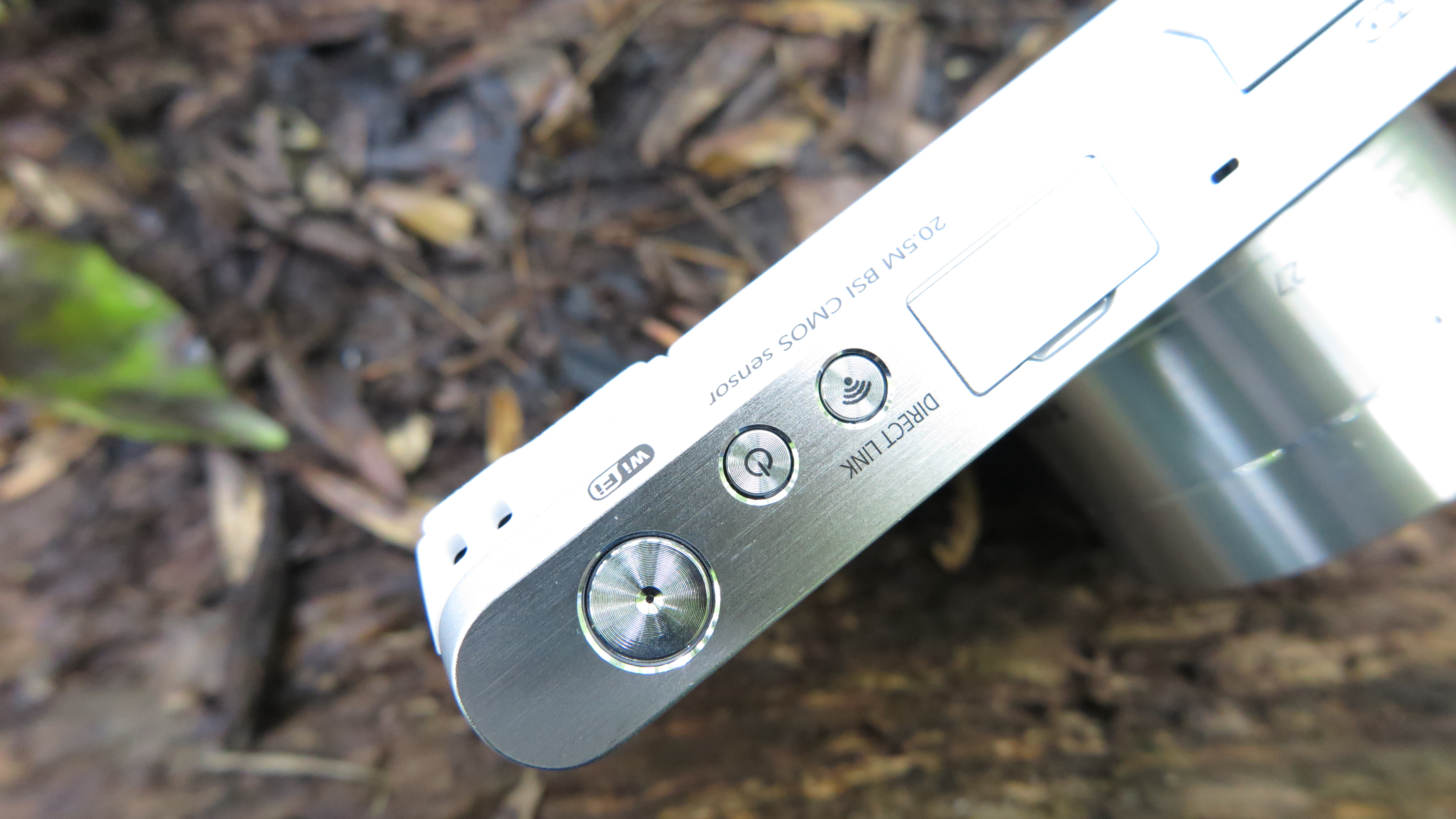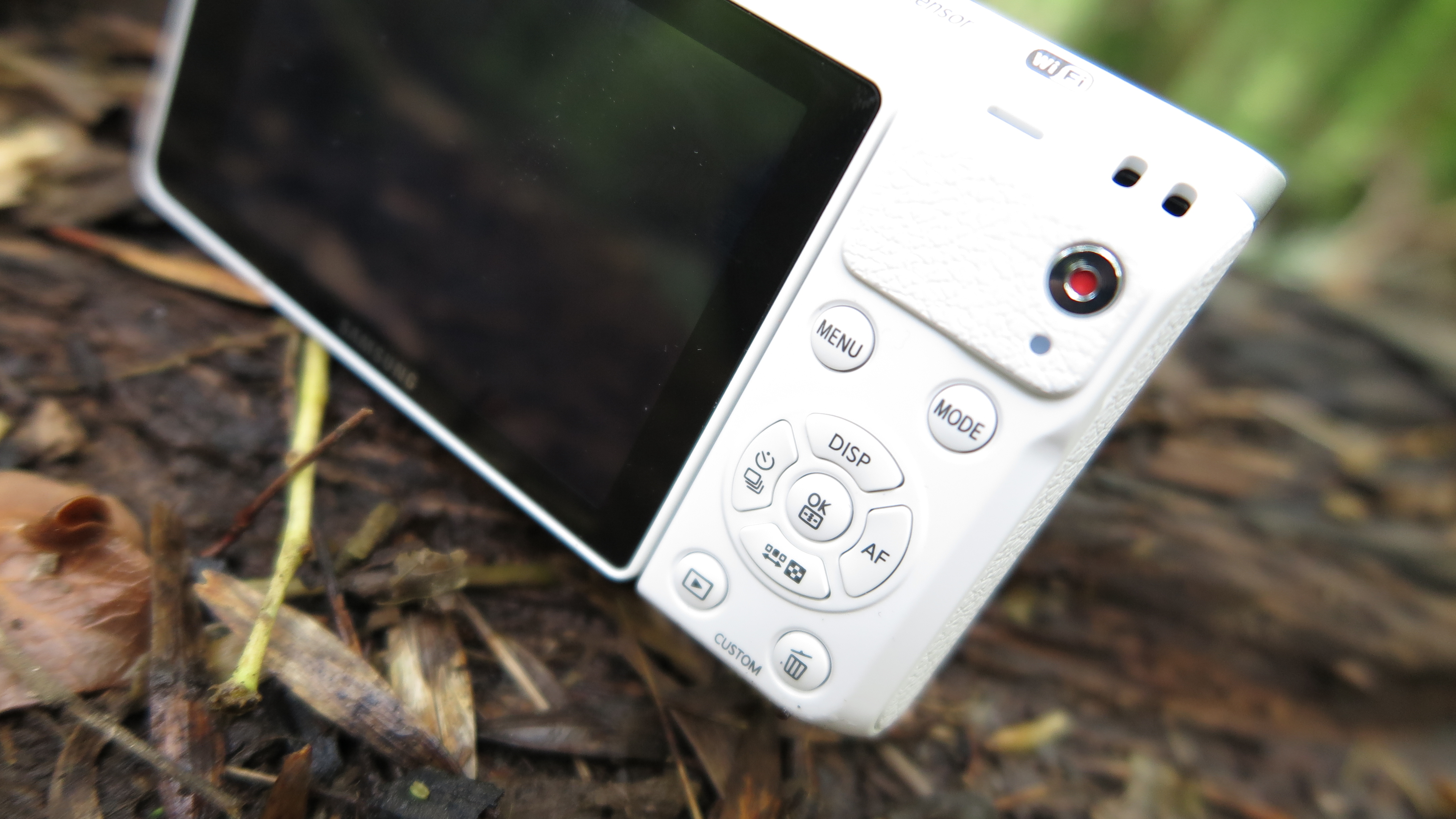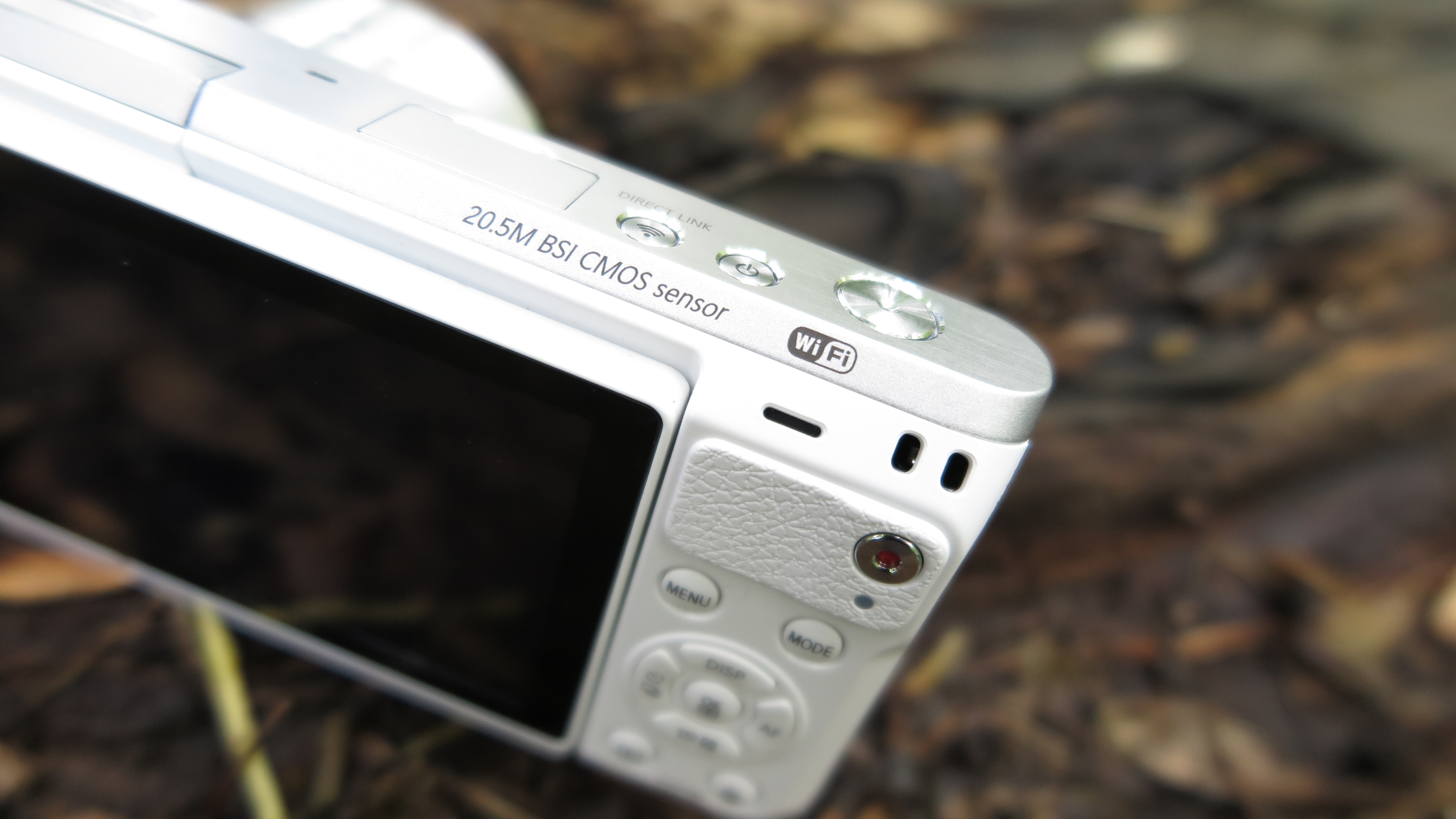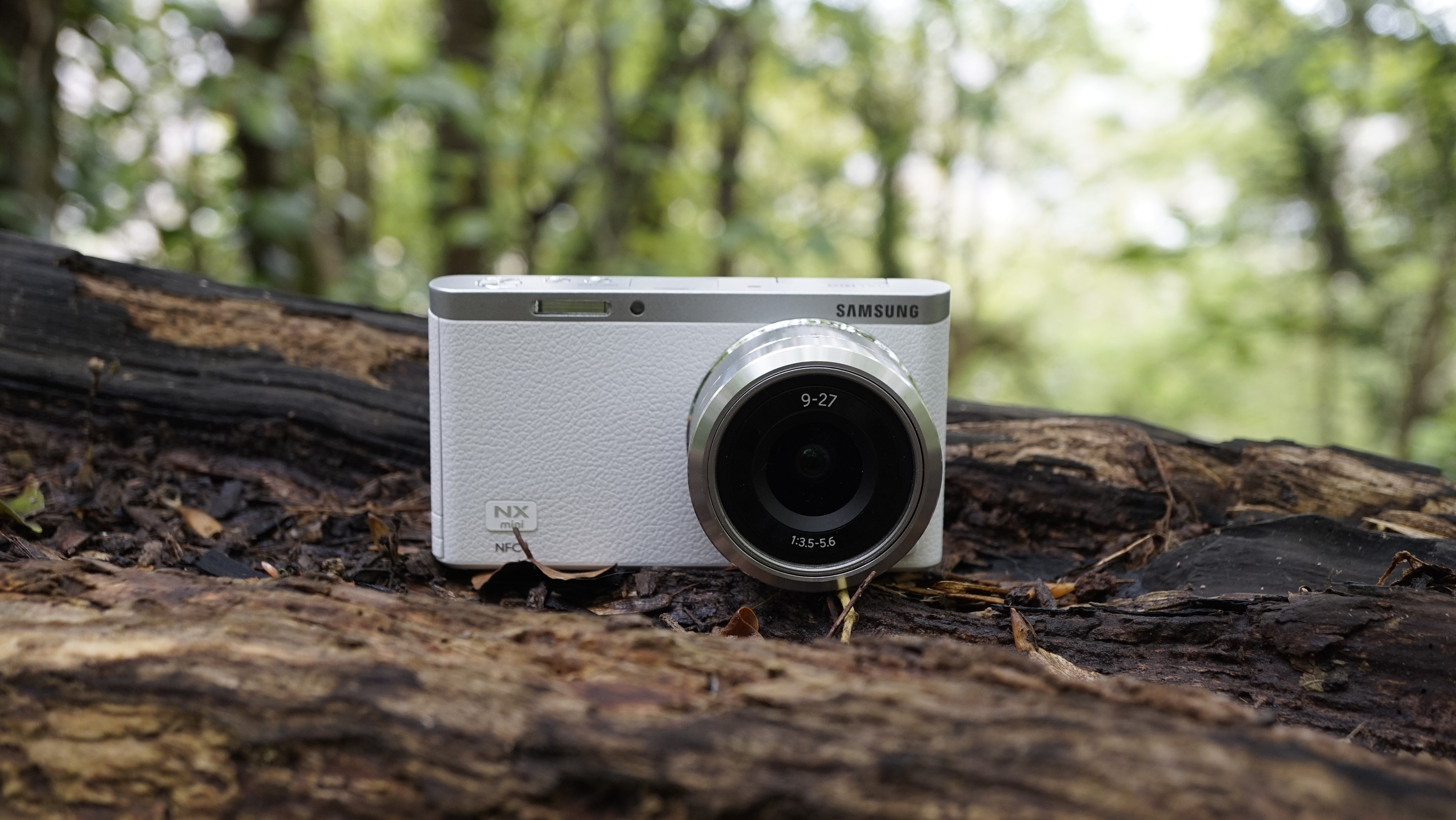Why you can trust TechRadar
Probably the first thing you'll notice about the NX Mini is its incredibly small size. If you're using it with the 9mm pancake lens, you would be forgiven for thinking it was just an ordinary compact camera.
If you're using it with the 9-27mm it looks a little less balanced, even though the lens collapses into itself to make it smaller. If you're using the 9mm lens, you could probably fit the NX Mini into a trouser pocket, but with the 9-27mm you'll still be able to fit it into your jacket pocket.

Despite it small size, and the fact that it offers a touchscreen, there's still a decent number of buttons to be found on the NX Mini. On the top of the camera is a power on/off button, a direct button for Wi-Fi connectivity and the shutter release. Meanwhile, on the back of the camera, adjacent to the screen, is a standard four way navigational pad, with each directional key having its own assigned function.
You'll also find a menu button, playback button, delete button and a decidated mode button – pushing this will bring up a virtual mode dial on the touchscreen from which you can choose from the various different shooting modes which are available, such as aperture priority.
Before you can shoot, if you're using the 9-27mm kit lens, you'll need to extend it. To zoom in and out, you twist the lens, as you might do a traditional CSC or DSLR lens. As it's not a power zoom lens, you will need two hands to zoom in and out, which does seem a little awkward considering the small size of the camera – it would otherwise be a perfect candidate for using one-handed.
Much of the camera's operation takes place via the touchscreen. For starters, setting the AF point is very quick and easy – simply tap the point on the screen you want to focus on. Changing other settings is slightly more fiddly. At the bottom of the screen, if you're shooting in semi-automatic or manual modes, you'll see parameters such as aperture, shutter speed, exposure compensation and sensitivity.

Tapping any of these will bring up a virtual dial which you can scroll through to get to the setting you need. While this is good in theory, the size of the virtual buttons is a little small, so you'll need some degree of precision. You can also use a combination of the screen and the physical buttons, which may help with some of the awkwardness.
You can also set the camera to fire off a shot when the screen is tapped, which is particularly useful when using the camera from an awkward angle.
If you tilt the screen to face all the way forwards, it will automatically enter self-portrait mode, which means that there will be a delay of three seconds before the shutter is released, giving you time to compose, press the shutter release button and make sure you're face is in the right position and expression – it's a simple, yet handy, feature.
There's not a great deal of customisation on offer with the NX Mini. You can set a few different settings, such as AEL or One Touch RAW+ to the delete button, which doubles as a custom button when in shooting mode. You can also change the function of the Wi-Fi button to make it perform one of the different Wi-Fi settings. Aside from that, you're pretty much stuck with what Samsung has chosen.

It's a shame not to see a function or quick menu and button, to give you quick access to some of those settings which are slightly more inaccessible than on a full-sized camera, but it's also fairly likely that Samsung expects the majority of customers of this camera to use it in fully automatic mode.
Amy has been writing about cameras, photography and associated tech since 2009. Amy was once part of the photography testing team for Future Publishing working across TechRadar, Digital Camera, PhotoPlus, N Photo and Photography Week. For her photography, she has won awards and has been exhibited. She often partakes in unusual projects - including one intense year where she used a different camera every single day. Amy is currently the Features Editor at Amateur Photographer magazine, and in her increasingly little spare time works across a number of high-profile publications including Wired, Stuff, Digital Camera World, Expert Reviews, and just a little off-tangent, PetsRadar.

